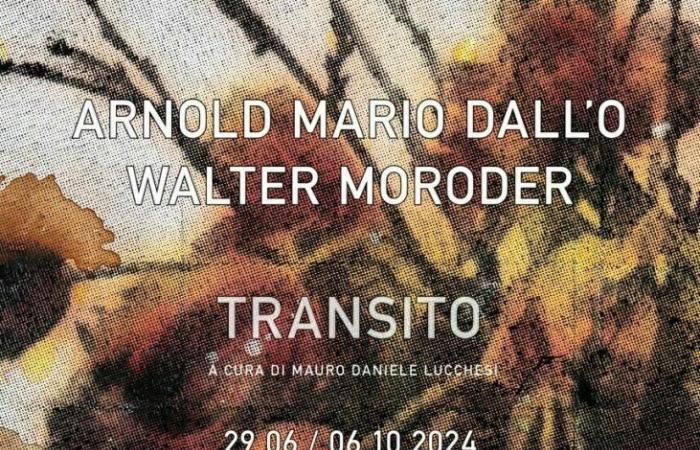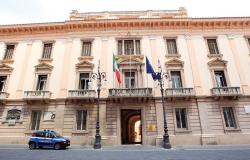Is titled “Transit” the exhibition of Arnold Mario Dall’O (Bolzano 1960) and Walter Moroder (Val Gardena 1963), which will be exhibited at Diocesan Museum Of Massa (MS) from Saturday 29 June – vernissage at 9.15 pm – to 6 October 2024, and created in collaboration with theFour Crowned Association and the scientific direction of Daniele Lucchesi.
Yet another stage in a journey that for some years has seen the Museum engaged in comparing ancient art (the museum conserves, among others, valuable works by Jacopo della Quercia (1374 – 1438), Felice Palma (1583 – 1625), Agostino Ghirlanda (1550 – 1588), and contemporary languages. The exhibition itinerary includes 11 sculptures by Moroder, 3 sculptures and 8 paintings by Dall’O and despite the technical differences, the two artists share points of view and modus operandi and above all a vision of art and reality. The transit of the title alludes to a condition that, going beyond the concept of instability and that of physical and perceptive stability, ideally adheres to a “nomadic” attitude, which predisposes the artist to a dynamic observation, in progress, which frees itself from circadian canons and the related spatial and temporal parameters. Both give painting and sculpture – arts of space – connotations that extend to the sphere of time, inviting the use of phonemes such as duration and process.
The plastic figures of Walter Moroderin a waiting position, the result of an archaic stylistic syncretism indebted to Western but also Asian, South American and African traditions, free themselves from the celebratory and encomiastic dimension of classical sculpture. The works of the South Tyrolean artist are characterized by the participatory horizontality that involves reality and places the observer in the same paradigmatic context, renouncing pedestals and plinths, opting for an anti-monumentality ideal. His concept of plasticity rejects the concept of realism and narrativity in favor of a suspended time freed from the heaviness of everyday life. His figures, his bodies reject anatomical precision in favor of an ancestral human ideal and the same goes for the physiognomy and the clothes: synthesis of forms and contrast of volumes in favor of an ancestral mnemonic conception of the human figure. Sculptures that testify to the reflection on the extreme outcomes of plastic art such as those of Fontana that go beyond the plastic dimension to reach the architectural one.
Arnold Mario Dall’O with extreme capacity for analysis and synthesis combined with admirable technical expertise, he reinterprets the long tail of Postmodernism, refusing to be anchored to a recognizable and reiterated style in favor of expressive freedom and a point of view in transit. Dall’O gives power to the image and its producer, choosing “neutral” images, decontextualized, often taken from the web, and devoid of narrative relevance once taken from their place of belonging. Works that also do not participate in the parametric space-time systems and the concept of realism, but are inserted into a flow, in a transit that leaves ample space for the sensitivity and instinct of the artist and the observer, in a hyper-technological era that reduces sensitivity to an anti-functional element.
Both artists use the canons of verisimilitude and realism to reconstruct images and forms that are “devices” that relentlessly question and involve the observer. They force the latter into a perceptive attitude freed from the fruitive passivity typical of today’s technological media. The linguistic choice of the two artists continues to favor transit, rejecting the consolidated position to better capture the essence of an existence within a “liquid society” marked by “weak thought”. “Dall’O and Moroder – explains Daniele Lucchesi – continue to explore and translate into interpretable forms, those territories of the invisible – making them visible – where dust does not settle, because they are in continuous movement, always new to nourish a virgin gaze inclined to amazement and wonder“.… read the rest of the article”
The exhibition will remain open until 6 October 2024 at the Diocesan Museum of Massa (Ms) Via Alberica 26, from 30 June to 1 September.
Your registration cannot be validated.
Your registration was successful.






